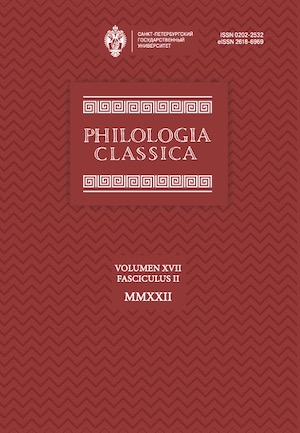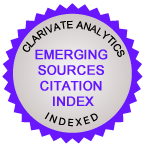De recentioris aetatis epigrammate Coi asservato
DOI:
https://doi.org/10.21638/spbu20.2022.209Аннотация
В статье рассматривается неопубликованная надпись, хранящаяся в замке Неранция на острове Кос (Греция). Она состоит из четырех элегических двустиший, которые косский исследователь Стаматиос К. Панделис составил незадолго до 1879 года. Предполагается, что она находилась на фасаде школы, основанной в тот год, который указан в надписи. По-видимому, после землетрясения, разрушившего Кос в 1933 году, она была перемещена в хранилище замка Неранция на севере Коса вместе со многими другими надписями. С одной стороны, она дает возможность узнать, как работали граверы, в какой степени греки знали свой собственный язык в его древней форме и как онипоступали, когда приходилось использовать (тогда и сейчас) необычные формы языка. С другой стороны, надпись имеет отношение к культурной истории Греции в последние годы Османского правления и в годы после него, поскольку Кос был частью Османской империи до 1912 года, после чего перешел под власть Италии до 1947 года, когда остров был включен в состав Греческой Республики. Поэтому целью работы является выяснение исторических и реальных обстоятельств появления надписи, а также анализ композиционного процесса этой посвятительной эпиграммы с метрической точки зрения (она содержит много отклонений от классических правил), стиля и классической традиции. Эта надпись ранее не изучалась из-за своих специфических особенностей. Действительно, это эпиграмма, написанная в 19 веке, но на архаизирующем греческом языке (т. е. с небезупречным соблюдением правил классической грамматики), поэтому она не изучалась ни неоэллинистами, ввиду древнего характера ее языка, ни классиками, так как была составлена в новое время.
Ключевые слова:
греческая эпиграфика, современная греческая история, история греческого языка, греческий язык
Скачивания
Библиографические ссылки
Λιθοξόου-Σαλάτα Ζ. Εὐαγγελικὴ Σχολὴ Σμύρνης. Ἀθήνα, αὐτοέκδοση, 1959.
Загрузки
Опубликован
Как цитировать
Выпуск
Раздел
Лицензия
Статьи журнала «Philologia Classica» находятся в открытом доступе и распространяются в соответствии с условиями Лицензионного Договора с Санкт-Петербургским государственным университетом, который бесплатно предоставляет авторам неограниченное распространение и самостоятельное архивирование.






